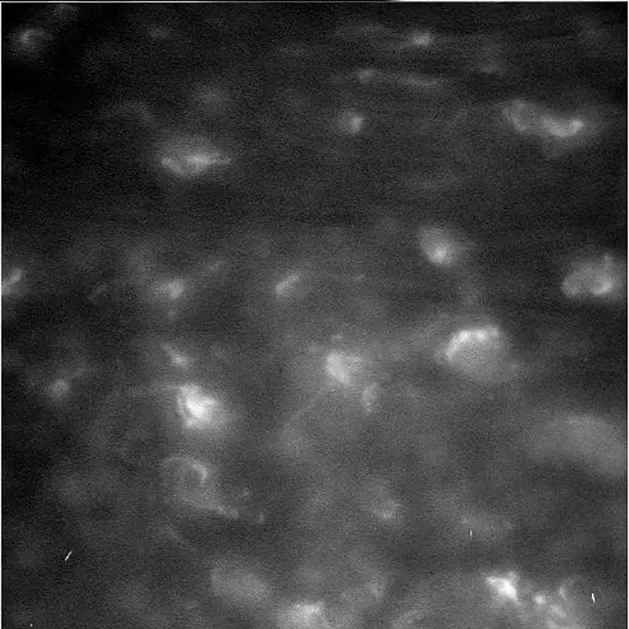NASA's Cassini spacecraft has finished the first of 22 dives it will make through the gap between Saturn and its rings before its mission ends in September 2017.
During the dive, Cassini travelled about 124,000kph and came within 3,000km of Saturn’s cloud tops and within 300km of the innermost visible edge of its rings.
The spacecraft used its large dish-shaped antenna, which is about 4 metres across, as a shield to deflect any particles that might have caused damage.

The manoeuvre is part of the Cassini mission's Grand Finale as it approaches the end of its mission studying the Saturnian system.
This view of Saturn’s atmosphere was captured by NASA's Cassini spacecraft during its first Grand Finale dive past the planet on April 26, 2017.
"No spacecraft has ever been this close to Saturn before. We could only rely on predictions, based on our experience with Saturn's other rings, of what we thought this gap between the rings and Saturn would be like," says Cassini Project Manager Earl Maize.
"I am delighted to report that Cassini shot through the gap just as we planned and has come out the other side in excellent shape."
The next dive through Saturn’s rings is scheduled for 2 May.

